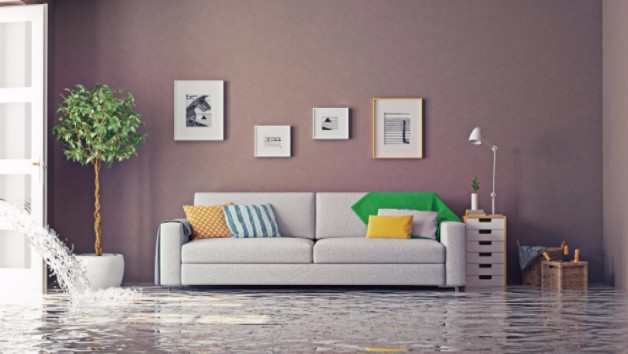Flooding causes destruction that is especially difficult to clean up. Along with the mold that standing water creates, flood waters can also damage or destroy many types of equipment that run on electricity or gas burners, including certain components of your air conditioning and heating system.
If your home or business has recently been flooded, you might be wondering if your air conditioner or furnace can be salvaged. Unfortunately, A/C units and furnaces are not designed to withstand submersion.
If you believe that your HVAC (heating, ventilation and air conditioning) equipment has been damaged by flood water, continue reading for a few things you should know.
Flooded Air Conditioners
The part of your air conditioning system that’s placed on the outside of your house or building is designed to withstand rain and humidity. Electrical components of outdoor air conditioning units, such as wires, are sealed to resist damage from falling water.
Additionally, an air conditioning units are designed with ventilation so that small amounts of water dry quickly when the outside portion of an air conditioning unit gets wet.
Submersion, however, causes more damage because the seals around the wires are not resistant to extended submersion and cannot dry quickly through the ventilation.
Flooded Furnaces
Furnaces are most often damaged by flood waters when the lower level of a house or business is flooded. Like air conditioners, when certain components of a furnace are submerged in water, they corrode.
In furnaces, the parts that are most likely to corrode are the valves and burners. Corrosion of these components will lead to equipment malfunction.
What Happens If Water Damage is Ignored?
It’s possible for an air conditioning unit or furnace to continue to work for a while after flooding has occurred. Unfortunately, your unit is likely to have decreased efficiency and reliability.
Additionally, furnaces that begin to corrode have the potential to catch fire or explode because a valve or burner is not functioning properly. This is a serious safety concern.
Importance of a Pre-Inspection
If you’re unsure about whether or not your furnace or air conditioner was submerged, you might choose to do an inspection yourself. Safety is your number one concern when inspecting any electrical equipment, so make sure you turn off the breaker to the air conditioner before you touch it. Air conditioning units have coils and wires that can short-circuit due to water damage.
Additionally, make sure you check your thermostat for battery backup. This battery can hold enough electrical charge to cause a shock, even if you turned off the breaker. If you’re ever unsure if your electricity is off, consult an HVAC professional.
If you choose to do a pre-inspection yourself, check the wires and connectors for debris. Any leaves, twigs or dirt should be immediately visible and removed. Unfortunately, corrosion can take longer to occur. This is why an air conditioner or furnace that seems to be working immediately after a flood can have reliability problems later.
In order to give your HVAC system the best opportunity for repair, contact a professional sooner rather than later. It’s possible that only certain pieces will need to be replaced. Again, a professional heating and air conditioning technician will be the best person to determine which parts need to be replaced.
Unfortunately, many times a furnace or air conditioner that has severe water damage cannot be salvaged. Keeping an electrical piece of equipment that has water damage can be dangerous. A furnace and air conditioner technician will be able to tell you what options you have.

